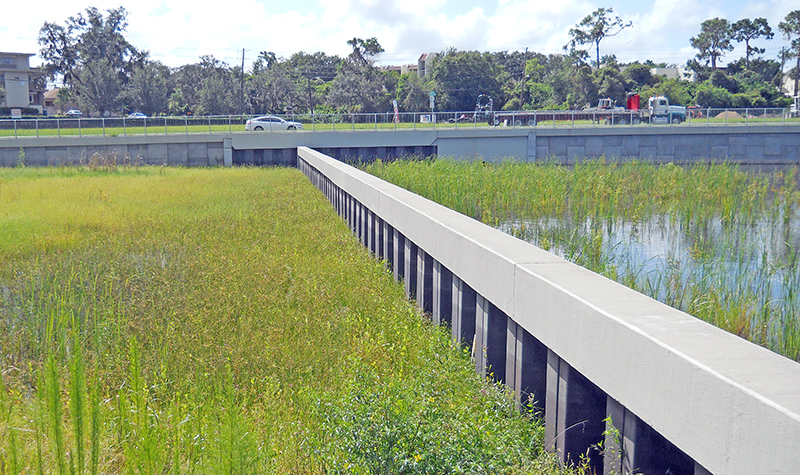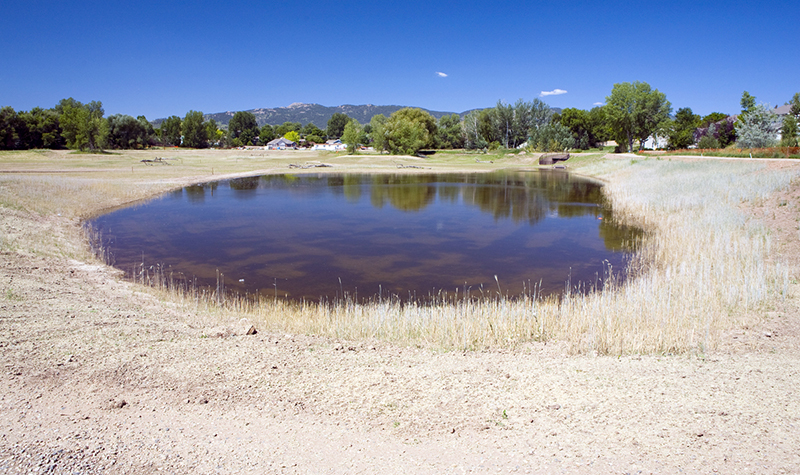Best Management Practices for Stormwater Runoff Facilities: Detention vs. Retention
 April showers bring more than May flowers. Snow melt and springtime rains also bring stormwater runoff pains.
April showers bring more than May flowers. Snow melt and springtime rains also bring stormwater runoff pains.
Why is stormwater runoff a problem?
Stormwater runoff impacts two areas: water quantity and water quality. When vegetative surface cover is replaced with streets and buildings, the rate of stormwater runoff, which starts as precipitation (rain, sleet, and melting snow), increases significantly. Stormwater runoff from hard, urban surfaces travels faster and in larger quantities, which can cause erosion, damage waterways, and destroy habitats for fish and other aquatic life.
In terms of water quality, stormwater runoff is a leading source of water pollution. Rain and melting snow pick up numerous pollutants – chemicals, oil, sediments, nutrients – from parking lots, roads, driveways, rooftops, and other hard surfaces. These pollutants are then washed into ditches and storm drains. Eventually polluted stormwater can flow directly into streams and rivers.
How do you manage stormwater runoff?
Fortunately there are relatively easy, low-cost systems to handle stormwater runoff. Best management practices (BMPs) are techniques or methods of water pollution control that manage the quantity and improve the quality of stormwater runoff. Stormwater facilities are a type of BMP that play an important role in collecting stormwater, removing pollution, and slowly releasing stormwater at a rate that controls flood flows. Stormwater facilities are essentially classified into two categories, depending on their function – detention facilities and retention facilities.
Detention Facilities
A detention facility temporarily stores floodwaters during rain or flood events. Detention facilities are designed in two forms: dry or wet. A dry detention facility imitates the conditions of naturally vegetated areas by allowing sediment to settle out of the stormwater runoff; stormwater slowly drains at a controlled rate until the facility empties. A wet detention facility is wet year-round and holds a permanent pool of water. The wet detention facility acts as a water treatment device by having a prolonged time to hold water, ranging from many days to several weeks. This allows numerous pollutant removal mechanisms to operate.

Retention Facilities
A retention facility is designed as a stormwater control structure that holds and treats stormwater runoff. Retention facilities provide water quality benefits through reducing sediments and removing other pollutants. According to the United States Environmental Protection Agency Stormwater Best Management Guide, “while detention basins rely on solids-settling processes, retention ponds remove dissolved nutrients through several physical, chemical, and biological processes in the permanent pool.”
No single BMP can solve all the issues that arise with stormwater runoff. Civil engineers work with municipal clients to design facilities that meet their stormwater needs, whether that’s improving quality and reducing pollutants in stormwater, slowing stormwater runoff, or both.
For more information about stormwater best management practices, contact any of the service leads for our civil and municipal engineering groups.

Post a comment: